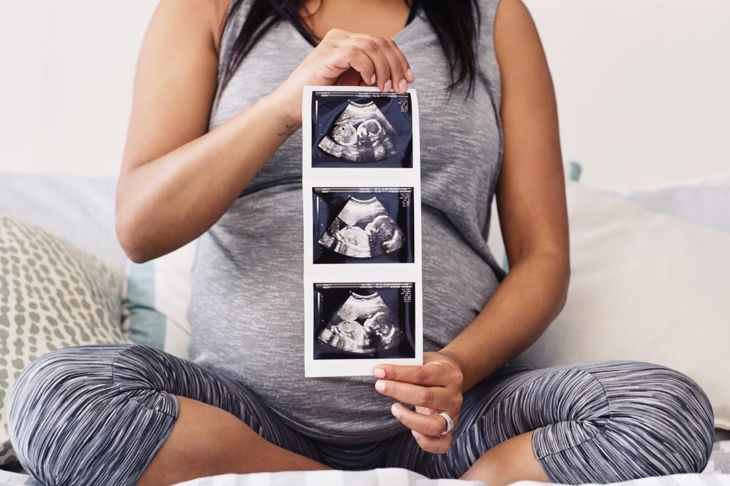A baby’s due date is estimated from the expecting mother’s last ovulation and menstruation, rather than the date of conception. Doctors must make many assumptions in these calculations, and many factors can affect the duration of a pregnancy. A combination of due date calculators and probe ultrasound gives the best possible estimate of a baby’s due date.
How Is Pregnancy Measured?
When expecting a child, specific developments occur in order, serving as checkpoints from conception to labor and delivery. A pregnancy is measured in weeks within three trimesters. The first trimester includes weeks zero to 12. The second trimester covers the 13th to 24th weeks. Finally, the third trimester encompasses weeks 25 to delivery. After 37 weeks of pregnancy, the baby is considered full-term, and most babies are born between 37 and 40 weeks. Knowing the week of a pregnancy at each checkup helps healthcare providers determine if mother and baby are healthy and progressing normally.
Only an Estimate
A baby’s due date can be estimated from the first date of the last menstrual period, or through an ultrasound. Taking the date of the last menstrual cycle and adding 40 weeks provides an estimated due date. However, this assumes the date of conception was exactly 14 days after the start of the last period — the time at which the average woman is most fertile.
Is the Due Date Reliable?
Research shows that only 70% of women deliver within 10 days of their due date, and only 4% of women deliver 280 days or 40 weeks from their presumed conception. This is because doctors must make a number of assumptions when estimates the baby’s arrival. First, 40 weeks from last period assumes a date of conception exactly 14 days after the start of the last period. In reality, conception can occur anywhere within the fertility window. Additionally, the 40-week method assumes a 28-day menstrual cycle, but women’s cycles range from 21 to 35 days.
Ultrasound
In addition to using the menstrual cycle to determine the delivery date, the ultrasound can help determine fetal age. Ultrasound imaging of the fetus within the first trimester or first 14 weeks is an accurate way to determine gestational age. Doctors often use the ultrasound in combination with the menstruation estimation to get to the due date.
New Methods
Recently, doctors have achieved more precise due date estimations using probe ultrasound technology. The angle of progression is a measure of how far into the pelvis the fetus has moved before delivery. By measuring this distance with transperineal ultrasound — which involves inserting a probe to visualize the cervix — the descent of the baby can be measured and the time to delivery assumed.
What Determines the Length of a Pregnancy?
Though we use the estimate of 40 weeks gestation, pregnancy can be longer or shorter due to other variables. Age, height, nicotine and alcohol use, pre-pregnancy body mass index, and pre-existing conditions all factor into the length of a woman’s pregnancy. The amount of hCG hormone and early pregnancy bleeding also affect gestation time.
Early Arrival
The chances of preterm labor increase if the mother has experienced it before, is pregnant with multiple babies, had uterine fibroid removal, or a shortened cervix. Previous miscarriages also increase the likelihood of preterm labor. Smoking and drug use can also cause preterm labor, as may lupus and chronic stress. In teenage or geriatric pregnancies, where the mother is younger than 18 or older than 35, respectively, early labor is also more likely. Aside from adjusting manageable behaviors such as smoking, it is not always possible to prevent preterm labor.
Preventing Pre-Term Labor
Premature birth poses a number of concerns for the baby, and some steps can help reduce the likelihood of this complication occurring. It is important to receive sustained prenatal care throughout the pregnancy. Even before getting pregnant, a healthy body is ideal for an optimal experience. As you near the due date, staying hydrated is one simple and practical way to prevent preterm labor, as dehydration triggers contractions. Managing chronic conditions with medications can prevent hypertension, diabetes, or rheumatic diseases from inducing early labor.
Late Arrival
Just as babies can come before their due date, they can also arrive after. Causes of overdue pregnancy include prior overdue pregnancies, a male fetus, a mother with obesity, or, of course, a miscalculated due date. First-time pregnancies are also more likely to be overdue. Some research suggests that late arrival poses various health risks to the mother and baby: if the baby expels the meconium stool while still in the womb, they risk poisoning themselves, and vaginal tears are also more likely for late arrivals. More recently, however, some studies show that as long as mother and baby a healthy, there are few risks.
Older Predictive Methods
The oldest method of estimating pregnancy is fairly similar to current calculators. German obstetrician Franz Karl Naegele suggested calculating 40 weeks by adding one year to the first day of the expectant mother’s last period, subtracting three months, and adding seven days. This is typically three days off from the 40-week estimation.

 Home
Home Health
Health Diet & Nutrition
Diet & Nutrition Living Well
Living Well More
More




















